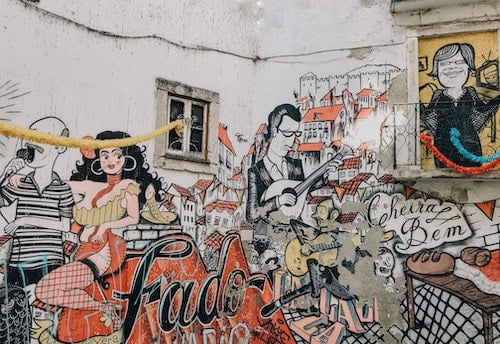The 6 Trickiest Consonants in the Portuguese Alphabet
If you enjoy listening to Brazilian and Portuguese music, you may have realized that the Portuguese language has a soft, delicate quality, and even certain poetry to it. Portuguese is also known for being a very romantic and expressive language, which may be one of the reasons why it’s impossible to be indifferent to it. However, before you can express your deepest feelings in this lyrical language, you’ll need to master the alphabet in Portuguese.
Table of Contents
→Sign Up Now: Free Trial Portuguese Lesson With a Native Teacher!←
No, you don’t need to fear. Lucky for all of us, the alphabet in Portuguese is quite similar to the English ABC, albeit with a few exceptions. So, where should we start?
I know. Let’s start with the consonants. After all, this is where we’ll find the biggest differences between Portuguese and English.
Here are the 6 trickiest consonants in the Portuguese alphabet, including examples and tips for pronunciation.
1. Ç – Cecedilha
Looks that look different from English symbols may be a bit scary at first, but don’t worry. The cedilla –that little tail under the “C”– is actually your friend. All she is saying is “this letter may look like a C, but please be sure to pronounce it like an S.
Which, after all, is not totally alien for English-speaking people! Think of words like ‘city’ or ‘ceiling’.
The difference between our own C and the Portuguese Ç is that the latter is pronounced like an S in all contexts.
See a few examples:
Ç = /s/
açúcar (sugar) is pronounced “asucar”,
terça-Feira (Tuesday) is pronounced “têrsa-feira”
taça (mug) is pronounced “tasa”
Easy, right?
2. Diagaraph CH
The combination of letters C+H presents a similar challenge to English speakers.

In Portuguese, this diagraph represents a sound that English speakers will be familiar with, though it’s not the one that may immediately come to mind.
Simply put, Portuguese CH is not a /ch/ as in ‘church’, but a /sh/ as in ‘charade’ or ‘choffeur’.
Here are a few Portuguese words that contain this sound:
CH = /sh/
chocolate (chocolate)
chá (tea)
chão (floor)
chapéu (hat)
3. G – Gê
G is the first consonant in the Portuguese alphabet that has two sounds depending on its phonetic environment.
When G is followed by an A, an O, or a U, it has the ‘soft’ sound that we know from words like ‘goat’ and ‘game’ (as opposed to the ‘hard’ G sound in ‘gem’).
However, when it is followed by an E or an I, the sound of the consonants changes completely to resemble the /zh/ sound in ‘pleasure’ and ‘television’.
Here are a few Portuguese words containing this letter:
Group 1: G as /g/
garota (girl)
gol (goal)
guarda-chuva (umbrella)
jogo (match)
Group 2: G as /sh/
gelo (ice)
girafa (giraffe)
gema (egg yolk)
gesso (plaster)
4. H – agá
H is both one of the most challenging and the easiest letters in the Portuguese alphabet.
Why is it challenging? Because it’s completely different from its English counterpart.
Why is it easy? Because you won’t need to make an effort to learn its pronunciation. In Portuguese, H is completely silent!
Consider these examples and say them out loud making sure you don’t pronounce the /h/ sound at all:
H = Ø
homem (man)
hora (hour)
hospital (hospital)
hotel (hotel)
See? Difficult… but easy.
5. J – jóta
If you’ve been paying attention, you will remember what we said about the combinations of letters G + E or G + I: In these contexts, G sounds just like a /zh/.
With J, it’s the same story! In Portuguese, this letter is not pronounced like the consonant in the English words ‘joy’ or ‘jam’, but as the /zh/ sound in ‘treasure’.
Let’s see a few examples:
J = /zh/
jogo (game)
ajuda (help)
jarra (jar)
Jamaica (Jamaica)
6. X – xis
Forget everything you think you know about the letter X!

In Portuguese, this tricky letter has not just one but four different sounds depending on their phonetic environment.
- If X appears at the beginning of a word, it will have the sound of a Portuguese CH /sh/:
X = /sh/
xadrez (chess)
xale (shawl)
xampu (shampoo)
Xangai (shangai)
- Sometimes, when X appears between vowels, it is pronounced as an S.
X = /s/
máximo (highest)
auxilio (help)
próximo (next)
- But not always! Other times, intervocalic X sounds like the /z/ in zoo.
X = /z/
exemplo (example)
exercício (exercise)
exame (exam)
- Finally, X is also pronounced /ks/ (just as in English), in a few common words of foreign origin:
X = /ks/
taxi (taxi)
saxofone (saxophone)
oxigénio (oxigen)
As you can see, learning the Portuguese alphabet is not extremely difficult, but it’s important to be aware of the many ways in which letters can be pronounced. This way, you’ll be able to avoid misunderstandings and pronounce words correctly from the very beginning.
Now that you know the Portuguese alphabet, don’t you think it’s time to start working on your speaking skills? At Listen & Learn, we can help you to reach your Portuguese learning goals, whether you’re a complete beginner or already have some knowledge of the language.
For over 20 years, we’ve been offering private and group classes to students of all levels all around the world, which are taught by native by qualified, experienced, and native-speaking language teachers.
→Sign Up Now: Free Trial Portuguese Lesson With a Native Teacher!←
Florence, who just finished a 12-week Portuguese course in Perth, says:
“I’ve been learning Portuguese with Listen & Learn for 3 months now and I’m loving every minute of it! My teacher is fantastic, she is always willing to answer any questions I have and she makes the classes really enjoyable. Also, very happy with your services. You have been very responsive and very quick to get back to me every time I had a question so, thank you!”
What about you? Would you like to get a personalised course based on your needs and preferences? Contact us today to find out more about our Portuguese courses!


